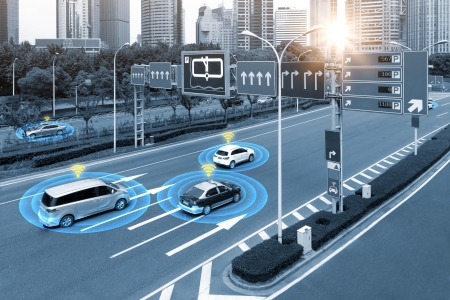How the introduction of platooning trucks affects road safety is not yet exactly clear (see the question Will self-driving vehicles improve road safety?). At any rate, a number of potential hazards still need to be resolved.
Platooning trucks are trucks that can maintain a very short headway distance due to automation. The trucks can communicate with one another. They exchange information, such as speed and acceleration, to synchronise their operations [21]. Several trials with platooning trucks have already been carried out, for example as part of the European Truck Platooning Challenge [22] and the European Ensemble project led by TNO, the Netherlands Organisation for applied scientific research [23].
Platooning trucks allow for a shorter distance between trucks, which creates more road space. Space saving increases as the distance between the automated trucks decreases. Shorter distances do, however, also create potential safety issues. For example, it must not be possible for platooning trucks to crash with each other or with other road users on account of technical problems for instance [24]. The idea is that only the driver at the head of the platoon should monitor the traffic situation. Before technology has reached that point, the drivers at the rear of the platoon should also do so however. They should all retain proper attention and intervene on time when necessary [25]. Danger may occur if other vehicles change lanes and try to merge into the platoon [24] [26]. It appears that such a scenario is inevitable and, therefore, solutions need to be found to ensure safety. Another potential hazard is that platooning trucks may veer off the road when trying to avoid a crash with other road users.
